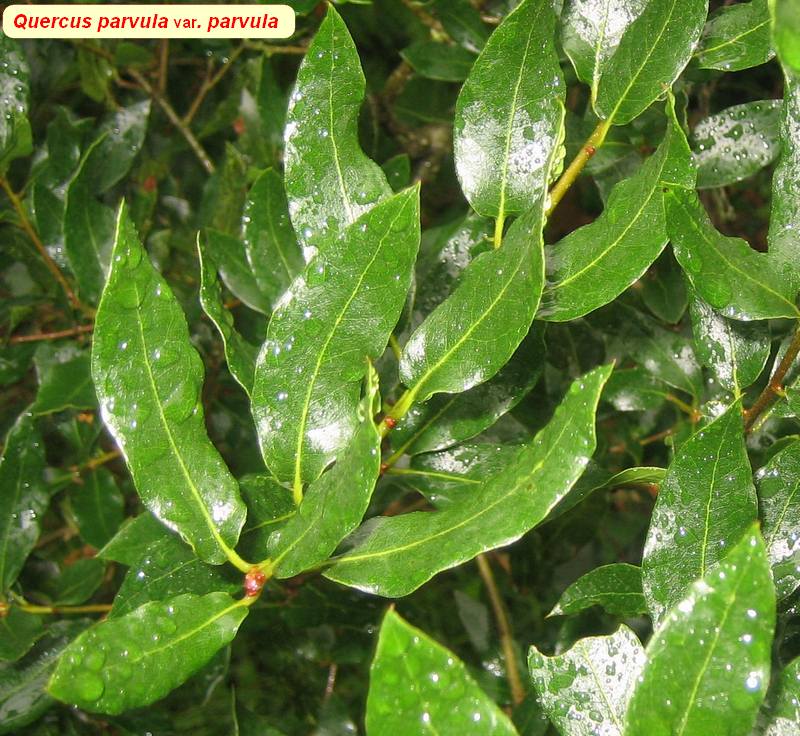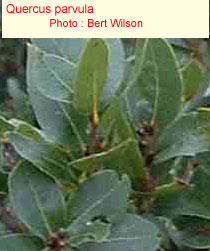| Quercus parvula | |
| Author | Greene 1887 Pittonia 1: 40 March |
| Synonyms | wislizenii f. parvula (Greene) Trel. 1924 |
| Local names | Sta Cruz Island oak; Coast oak; |
| Range | Sta Cruz Island, and some places in Sta Barbara County; |
| Growth habit | 1-3 m tall for the type species; |
| Leaves | 3-16 cm, evergreen; oblong, lanceolate or ovate; apex acute to acuminate; margins entire, seldom toothed; olive green, glabrous above; dull olive green, glabrous beneath; 6-8 vein pairs; petiole 2-10 mm; |
| Flowers | late spring; |
| Fruits | acorn 3-4.5 cm long, ovoid, stalked, with tip abruptly tapered and shorter than Q.wislizeni; cup 1-1.5 cm in diameter, tomentose inside, with thin, flat scales; maturing second year; |
|
Bark, twigs and |
thick grey brown branchlets; |
| Hardiness zone, habitat | zone 8; occurs in wet areas of coastal fog belt; |
| Miscellaneous | -- Sub-genus Quercus, section
Lobatae, Series Agrifoliae; -- Usually described as closely related to Q.wislizeni (and considered by Nixon 1997 as a synonym), but genetic studies of plants from Central California show some distinctions with those of North of Mexico justifying their classification as true species (K.C. Nixon, 2002); Q. parvula differs from Q. wislizeni in having larger leaves (3-16 cm versus 2-5 cm), undersides dull olive green (vs shiny yellow-green), and acorn tip (abruptly tapered vs gradually tapered); moreover the habitats are different as well : Q. parvula is typical of wet costal areas, while Q. wislizeni is typical of arid slopes in the interior. |
| Subspecies and varieties |
2
varieties for this taxon : 1/ var. tamalpaisensis S.K. Langer 1993 taller tree than the type (to 17 m), larger leaves (5-16 cm x 2-6); 610 m in Tamalpais Mounts, California, at 610 m. For Keuter & Manos 2017, this taxon does not appear to be a variety, but rather suggest a hybrid origin via successive backcrosses between Q. parvula var. shrevei and Q. wislizeni. 2/ var. shrevei (C.H.Muller) Nixon 1994 Novon 4: 392 = Q.shrevei C.H.Muller 1938 taller than the type (reaches 17 m); California, from Sta Lucia Mts to the San Francisco Bay.. For Keuter and Manos 2017, this taxon is the pure taxon, and the isolated Q. parvula var. parvula is an isolated population admixed to some degree with Q. wislizeni from the south, and possibly as well with Q. agrifolia. |
| Pictures |
|



